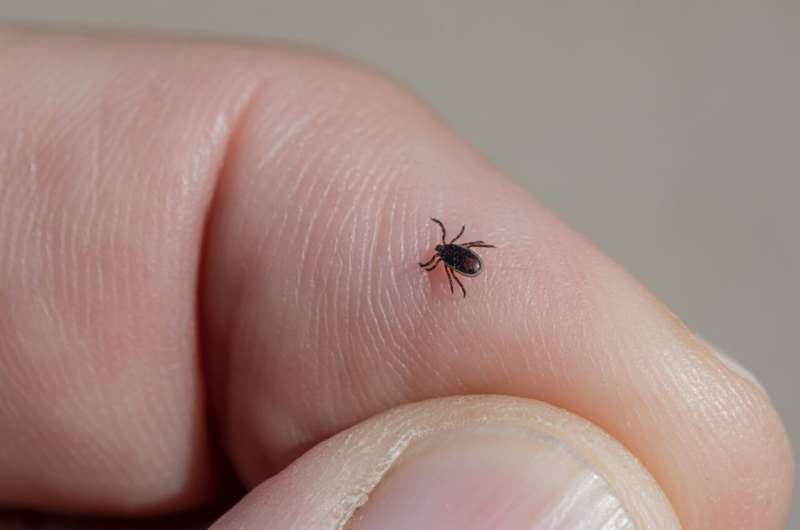This article has been reviewed according to Science X's editorial process and policies. Editors have highlighted the following attributes while ensuring the content's credibility:
fact-checked
peer-reviewed publication
trusted source
proofread
Scientists discover novel orthonairovirus in man bitten by tick in China

A case report published in the New England Journal of Medicine describes a previously unidentified orthonairovirus, dubbed Wetland virus (WELV), in a man bitten by a tick at a wetland park in Inner Mongolia, China, in 2019.
After isolating the virus from the index patient, a team led by Beijing Institute of Microbiology and Epidemiology researchers conducted surveillance to determine the prevalence of WELV infection among hospitalized patients with fever and a history of a tick bite.
The index patient was a 61-year-old man hospitalized in June 2019 after developing a fever and multiple organ dysfunction following a tick bite five days earlier and investigated its ability to cause disease in mice.
WELV, a member of the orthonairovirus genus in the Nairoviridae family, is most closely related to the tickborne Hazara orthonairovirus genogroup, which includes the Crimean-Congo hemorrhagic fever virus, the authors noted.
Virus detected in other patients, ticks, animals
Seventeen patients from four areas in China had nonspecific symptoms such as fever, dizziness, headache, malaise, muscle pain, arthritis, and back pain and sometimes, with petechiae (spots on the skin or mucous membranes due to bleeding from capillaries), localized lymph-node swelling, and neurologic symptoms.
The patients were diagnosed as having WELV through reverse transcription-polymerase chain reaction (RT-PCR). Common lab results were leukopenia (low levels of white blood cells), thrombocytopenia (low blood platelet count), and higher levels of d-dimer (indicating blood clots) and lactate dehydrogenase (indicating tissue or organ damage).
Testing of serum from eight recovered patients revealed a fourfold higher concentration of WELV-specific antibodies than those seen in samples collected during acute infection. A field investigation found WELV RNA in five tick species, as well as in sheep, horses, pigs, and Transbaikal zokors (a type of rodent) sampled in northeastern China.
WELV isolated from the index patient and ticks showed cytopathic (causing structural changes in cells) effects in the cells lining the human umbilical vein. Injection of the virus into the abdomens of mice and hamsters resulted in infection, brain damage, and death.
The researchers said the Haemaphysalis concinna tick may transmit WELV to an animal, which then passes it to its offspring through the ovaries.
"Initial symptoms of WELV infection manifest as nonspecific illness, thereby necessitating a differential diagnosis from other tickborne diseases," the researchers wrote. "Improving surveillance and detection for emerging orthonairoviruses will allow a better understanding of the effect that these viruses have on human health."
More information: Xiao-Ai Zhang et al, A New Orthonairovirus Associated with Human Febrile Illness, New England Journal of Medicine (2024). DOI: 10.1056/NEJMoa2313722


















